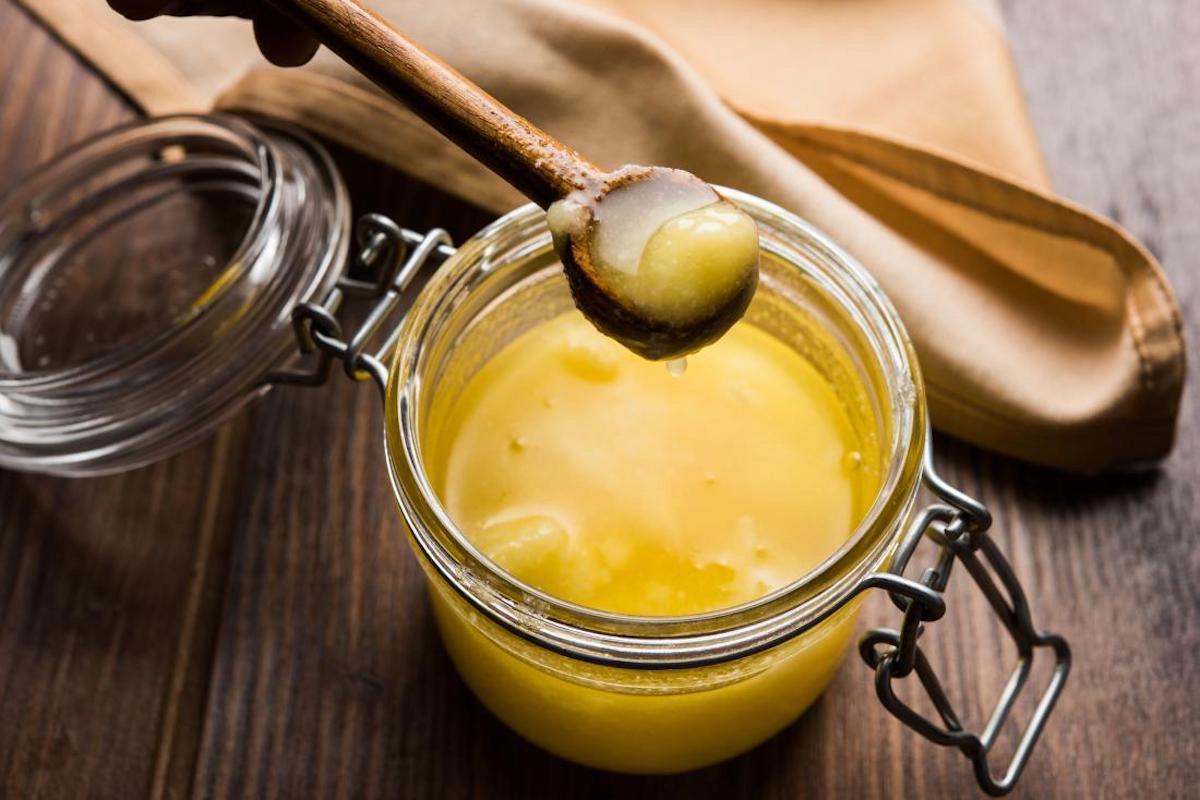
After hearing about ghee from all of my friends experimenting with the Paleo diet, finding it stores health food magazines, and even being offered it in my coffee, I figured it was finally time to look into it.
If you’re like me, you’ve heard rumors that ghee is sooo much better than butter, but never really quite understood what it was.
What is Ghee?
It turns out ghee is a variation of clarified butter. Ghee is made in the same way as clarified butter, but taken one step further. In short (because we’ll get into the in’s and out’s of how to make your own ghee later on), ghee is the product of heating up unsalted butter until the milk solids separate from the liquid, and all moisture is evaporated from the liquid.
how is ghee used?
Ghee is traditionally used in Indian cooking and Ayurvedic medicine, and was recently popularized in the Western world with the shifting positive attitudes towards high fat diets.
It was adopted into the high fat, high protein Paleo diet because it is seen as a butter alternative containing less dairy. It also is more versatile for cooking because it has a higher smoke point (375 degrees) and a longer shelf life. Most people find it to be perfect for sautéing and searing.
Health Benefits of Ghee
For a long time, ghee was thought to increase our risk of heart disease because it is so high in saturated fat, but this myth has been debunked. Nowadays, medical professionals believe there are many health benefits to substituting ghee for butter and other cooking oils.
1. Reduce risk of heart disease
Ghee has high amounts of conjugated linoleic acid (CLA), a fatty acid found to protect our bodies against carcinogens, diabetes and artery plaque buildup. Not only does CLA help fight cardiovascular disease by reducing plaque buildup, but it also helps your body resist carcinogens which are linked to cancer.
2. Great source of vitamins
Ghee helps you round out your vitamin intake by providing you with vitamins A, D and E, as well as being a great source of vitamin K2, which is important for fetus development in pregnant mothers.
3. Keeps your gut healthy
Ghee can be very reparative for your gut lining, ensuring better gut health. It contains a fatty acid called butyric acid which is proven to minimize inflammation in the gut, and help repair damage to the mucosal wall.
This prevents any seepage of undigested food particles and soothes pain, making digestion easier.
4. Help with weight management
As I mentioned before, the CLA in ghee helps prevent diabetes through weight management.
According to a study conducted by the Department of Natural Sciences at the University of Wisconsin-Madison, “CLA supplementation in overweight participants showed significant weight loss over a six month period.” By replacing different cooking oils and butters with ghee you may be able to shed some pounds and prevent any weight gain.
Make your own ghee
Making your own ghee is an easy DIY project that will save you money and ensure you know exactly what you’re putting into your body.
The first step is choosing the type of butter you are going to use. You want to find an unsalted, grass-fed butter to avoid any unnecessary hormones. Grass-fed butter also generally contains higher levels of CLA fatty acids, which we know have many health benefits.
Once you have your butter, the process is quick and painless.
Instructions
- Place your stick of butter on a saucepan and heat it on low, letting it melt slowly. Do not stir the butter, let it melt on its own for about 10-15 minutes.
- The butter will separate once it has melted and you will see the milk solids form into a white thicker foam-like substance.
- Let the butter continue to be heated until the clear butterfat (the golden liquid) starts to bubble. This means the moisture is leaving the butterfat and the ghee is starting to form. Let it simmer for about 8-10 minutes.
- You will know your ghee is ready when the bubbles get smaller and begin to look like foam on the butterfat portion of the melted butter. The milk solids will also start to turn brown and clump up a bit.
- Remove the butter from heat and use a slotted spoon to remove the foam and milk solids with stirring the butter.
- Line a strainer with cheesecloth and place over the jar you intend to store your ghee in.
- Immediately strain your melted butter into the jar. All of the milk solids and foam will remain behind in the strainer and you will have only your golden ghee in your jar.
- It will solidify as it cools and begin to look like a clearer form of butter.
storage
You should store your ghee in an airtight container, and even though it’s fine to be kept at room temperature I recommend keeping it in the fridge for a longer shelf life. Your ghee should be good to eat for about a month.
If your butterfat turned brown or black at any point throughout the cooking process you most likely burned it and should start from scratch.
The following post What is Ghee? (And How to Make Your Own) was first published on Annmarie Skin Care.
